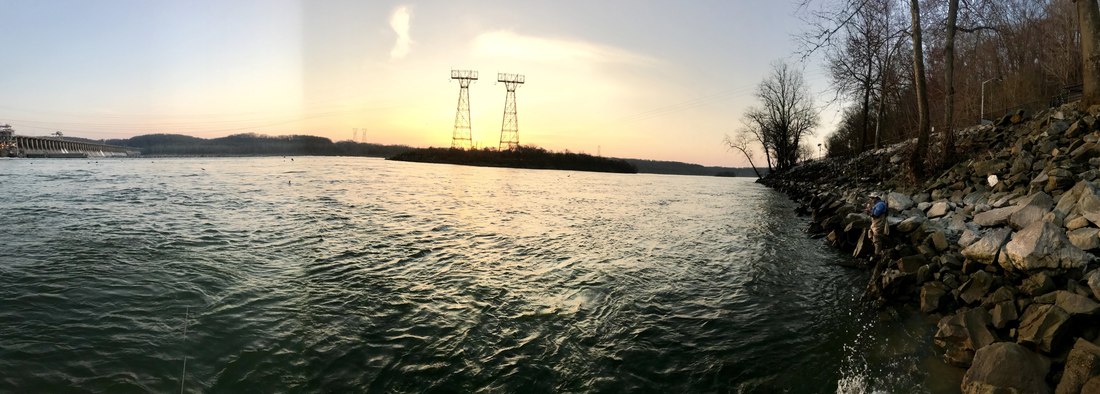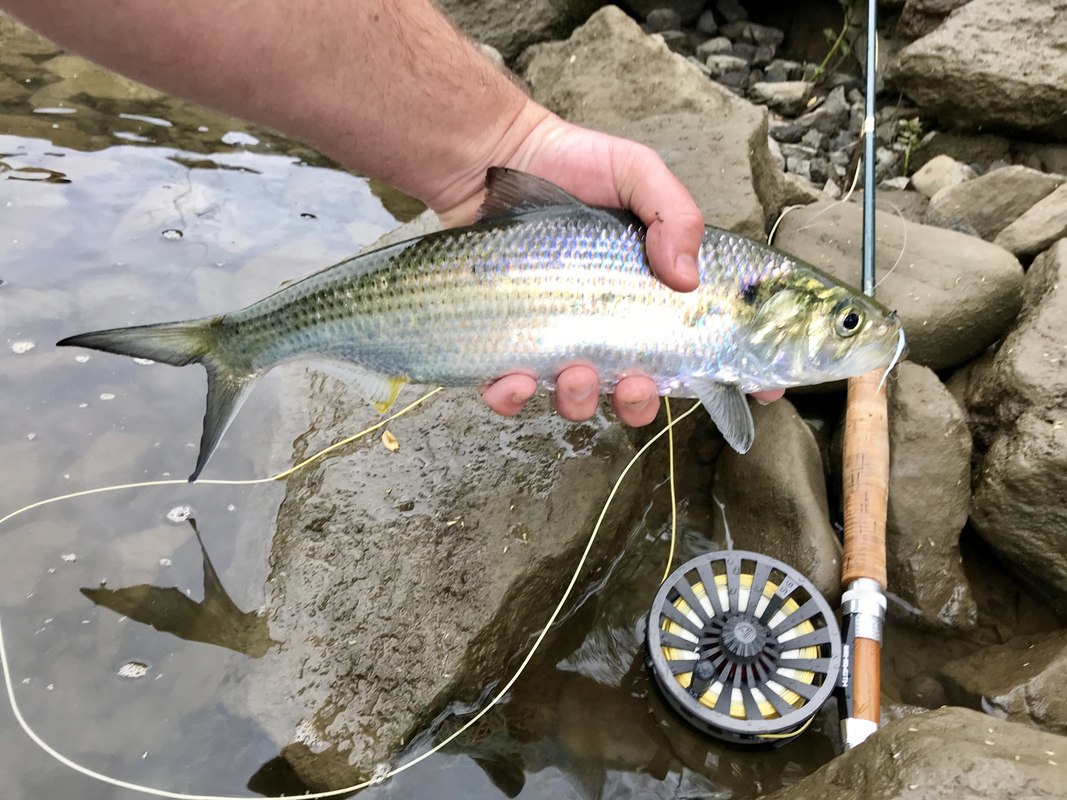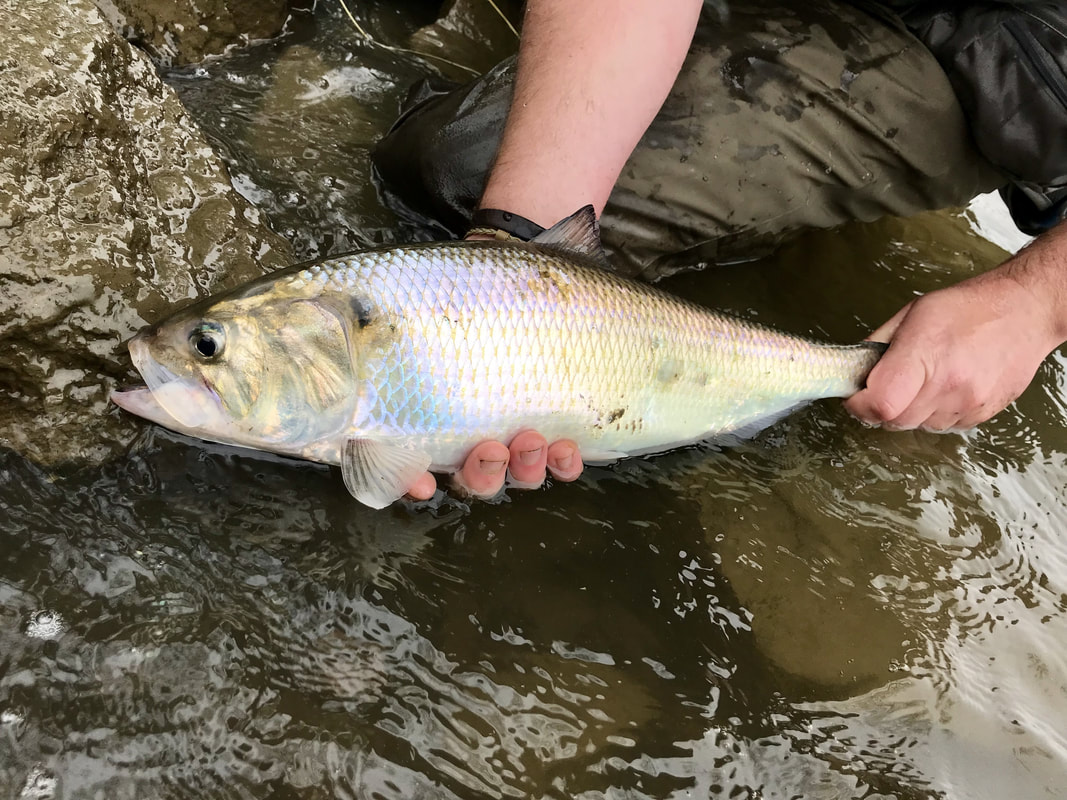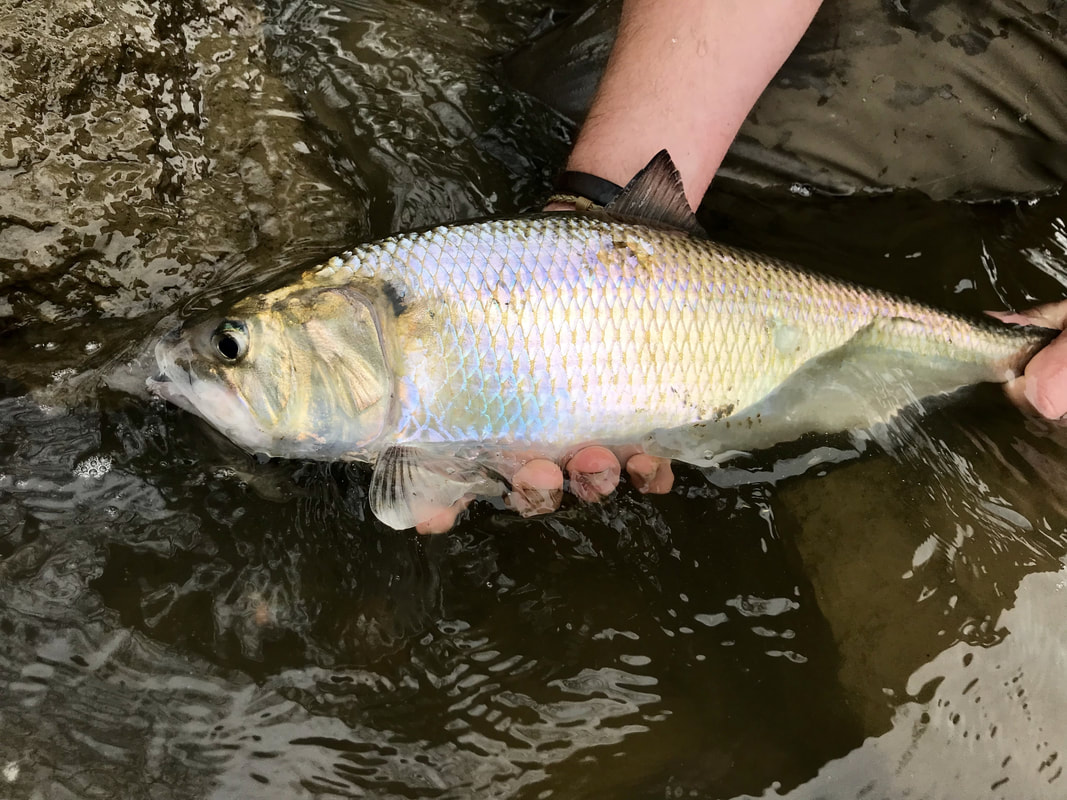|
"Yeah, it's pretty good. I've got about 15 and I've been here since 6." I was laying in bed listening to the owl when I got the text. 6:20. I promised myself one morning this week of not waking up to an alarm but woke up early anyway. Pushing the skunking I took last time I tried for shad out of my mind, I roll out of bed, throw on some clothes, and head out towards the Conowingo Dam. Google Maps said it'd take an hour and three minutes, I get there in 50. I usually use my 8 wt. for the river, but I've been taking out my Winston 6 wt. I inherited from my neighbor as of late. It's a fantastically responsive rod and fishing it feels like fishing. Sometimes, with my 8 wt., I feel like I'm just chucking heavy hooks full of feathers through the air and muscling fish back in. It's great for my kayak, but this season, when I'm wading warm waters, I'm taking the Winston. Rob gave me a flashy little fly with a pink bead head to use and on my second cast, I finally land my first Hickory Shad. Using a sinking leader helped get the fly down to where the shad where. Sling it out, let it drift down the current and swing it. Slow strips - strip, strip, pause, set. This is how it went for the first few hours. 15 minutes of catching shad on every other cast, then, a lull. But you keep casting, because you don't know when that next bite will start again. They released water late in the morning. Sirens sound, red lights flash and within minutes my boots are sunk and water is up to my knees. I put on a few split shot to get down. Roll cast out, let it swing, and with the first strip my line stopped. Caught on a rock. No, it's moving, but it's not like any other shad I caught that day. It stays low like a catfish and doesn't shoot straight upstream but out and back and then takes me on the reel as it breaks downstream back towards the bay. I slide my rod down, side pressure and turn it, slowly working it back towards me. Finally, a flicker of light in the murky water. An American Shad. 3 pounds? I've never seen scales so iridescent, flushed purple and blue by thousands of miles of salt water hitting the freshwater of the Susquehanna. It's beautiful. Heavy with muscle, a forked tail of a rudder, enough to finish out its journey.
0 Comments
|
|

www.mgarrigan.com by Michael Garrigan is licensed under a Creative Commons Attribution-NonCommercial-NoDerivatives 4.0 International License.




